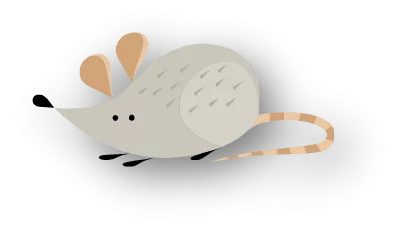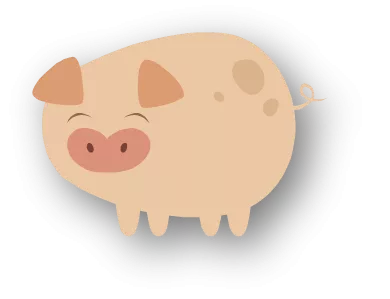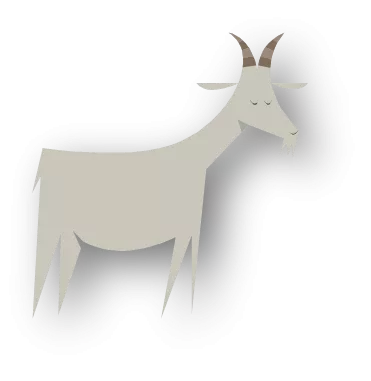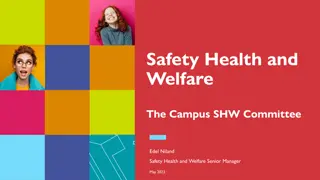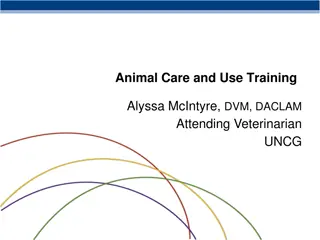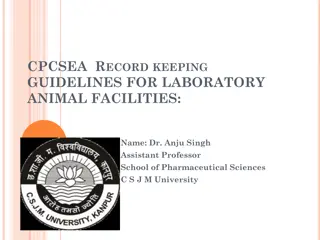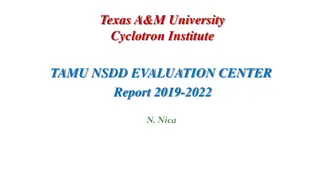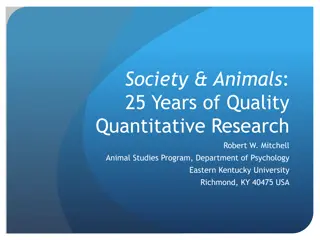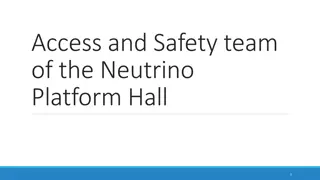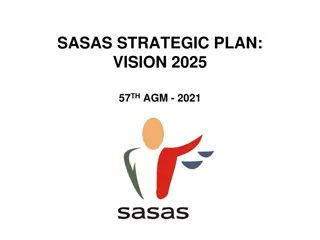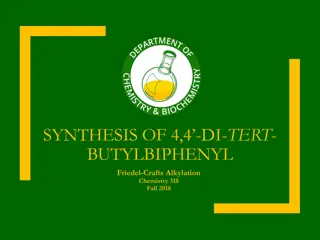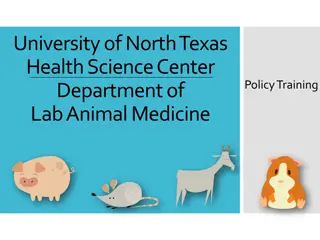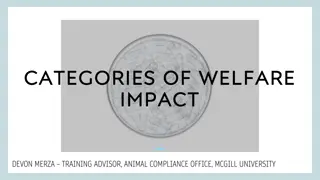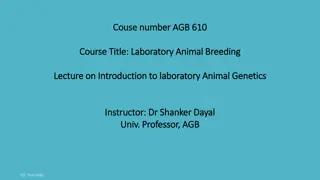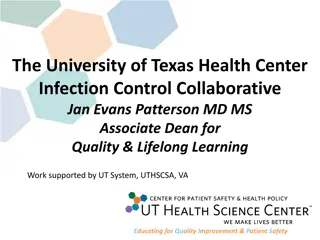Guidelines for Access and Safety in the University of North Texas Health Science Center Department of Lab Animal Medicine
Learn about the access protocol for keys and access cards at the University of North Texas Health Science Center Department of Lab Animal Medicine, including training requirements, staff availability, and laboratory apparel guidelines. Understand the importance of occupational health and safety practices, such as proper personal protective equipment and handling of zoonotic species. Stay informed about clean-up procedures and sharps disposal to maintain a safe environment.
Download Presentation

Please find below an Image/Link to download the presentation.
The content on the website is provided AS IS for your information and personal use only. It may not be sold, licensed, or shared on other websites without obtaining consent from the author. Download presentation by click this link. If you encounter any issues during the download, it is possible that the publisher has removed the file from their server.
E N D
Presentation Transcript
UNIVERSITY OF NORTH TEXAS HEALTH SCIENCE CENTER DEPARTMENT OF LAB ANIMAL MEDICINE Policy Training
Access to the Facility Keys and Access cards are granted after successful completion of the following: Online Modules Policy Training Hands-on Training Completed Medical History Questionnaire Added to the protocol via amendment by your PI. Completed key and access card request form signed by your supervisor, and DLAM, then it is submitted to campus police (this form must be separate from your lab key request).
DLAM Staff Staff is here Monday Friday 7:00 am to 5:00 pm. Limited staff is available on weekends - if you need immediate assistance, please call Marcie Dorsett. For general questions, contact Lou Williams at 2017 and she can direct your call.
DLAM Staff Director Dr. Daniels, DVM Facility Manager Marcie Dorsett Administrative Assistant Lou Williams Animal Health Technician Tito Nelson Senior Lab Animal Attendant Zaida Cornstubble Training Coordinator Kim Cavanaugh Lab Animal Attendants Staff that work in your rooms on a daily basis.
Laboratory Apparel Always have your ID badge visible. Wear clean lab coat or clean scrubs. Solid shoes (prefer rubber soles). No open toed shoes or sandals. Avoid heavy cologne or perfume. Do not smoke in lab coat.
Occupational Health & Safety Do not enter other animal rooms prevents cross- contamination Wear proper PPE wear gloves when handling the animals.
Occupational Health & Safety Working with potential zoonotic species specific training is given before working with certain species Do not enter the Clean Room if you need tubs, feed hopper or other equipment, look in the bio- bubble or ask DLAM staff
Occupational Health & Safety Clean up after yourself dispose of all trash before you leave the room. Additional charges may be charged to your per diem if this continues to be a problem. Do not place cages on the floor Sharps containers located in the procedure rooms 28, 97 and 106. If you do procedures in your room, DLAM can provide you with a sharps container. Do not leave needles in the room.
Occupational Health & Safety Fire alarms Please exit the facility if the fire alarm sounds. Pay attention to warning labels and signs found on doorways, rooms, bottles, etc. Radios/Headphones/Cell phones/Cameras are not permitted in the animal facility
Occupational Health and Safety Bites and Scratches If you get bitten or scratched by an animal in the vivarium, wash the area with soap and water. Report the incident to your supervisor - they will decide if it should be reported to the Safety Office. You may need to go to the Occ. Health clinic Harris Methodist. Allergies This is the most common health problem associated with lab animals. Wearing proper PPE can help prevent them. If you do develop allergies, let your supervisor know.
Animal Health and Husbandry Animal Health The health of each animal is assessed daily by DLAM staff. If you notice your animals have become ill, notify DLAM staff immediately. Fill out a green card and place it on the cage of the sick animal. Dead animals If you find an animal dead, place the animal in a glove or a black bag and give it to DLAM staff for proper disposal. If DLAM finds one of your animals dead, the investigator will be notified.
Assessing Animal Health Common things to look for in rodents: Activity level - lethargic Behavior vocalizing, self-trauma, aggressive Food/Fluid intake decreased feces/urine Eyes red staining Fur unkempt, soiled fur Posture hunched Respiratory opening mouth, labored breathing Others seizures, tremors, tumors, infection of wounds, paralysis
Animal Health and Husbandry Cage changes/Room cleaning schedule All caging is changed/cleaned at least once per week, some require twice per week. The schedule is posted on the room door. If you have any concerns or questions with the schedule of your room maintenance, please contact Marcie Dorsett at x2013. Feeding DLAM feed ad libitum, a pelleted diet to all rodents unless they are on a restricted diet. If you have questions or concerns, please call Marcie.
Animal Health and Husbandry Cage Cards Provided by DLAM. Please do not write on or remove the cards. Extra cards with information can be placed behind this card. We provide various pre-printed cards for your use. Animal density requirements The # of animals allowed per cage is dependant on many factors. For specific information regarding housing of the animals on your protocol, please contact Marcie. Please refer to The Guide for more information.
Animal Health and Husbandry Sentinels Sentinel animals are housed in each of the animal rooms. They are indicated by yellow cage cards. These are for DLAM use only, do not remove or handle these animals. They are used for pathogen testing every 3 months. Dirty or soiled caging If you have dirty caging from your lab or empty tubs in your room, please bring them to the cage wash room. If you find a flooded tub, notify DLAM personnel.
Transfers and Animal Counting Transferring animals if animals need to be transferred to a different protocol or to another PI, submit an animal transfer form to Zaida. Using pups Pups are counted if they are used for research purposes. Please count pups on the breeding form in the room. Breeding Breeding must be approved by the IACUC. Pups are counted on the breeding form in the room.
Euthanasia Euthanasia methods - Animals can only be sacrificed by the approved methods outlined by the American Veterinary Medical Association and in your protocol. Any deviation from this can result in the loss of facility privileges or protocol. CO2 asphyxiation (must be followed by a physical means) Cervical dislocation (after CO2; alone requires scientific justification) Barbiturate overdose
Euthanasia Policies: If you need animals sacrificed, please complete an Animal Euthanasia Form (Green sheet found on the shelves at the west entrance to the facility or ask DLAM staff) and also mark the cage card of the animal with an X. Turn the sheet in to a DLAM member. If you sacrificed animals in your lab, they should be in a black bag and given to DLAM for disposal. Please call x2014 to request a staff member to meet you at the carcass freezer on the dock.
Euthanasia Do not use red biohazard bags for regular disposal. DLAM has a CO2 tank in the Necropsy room for use. Ask a member of DLAM to open the door. Document in the log book in the room that you euthanized animals. A small fee is charged to the lab to use DLAM s CO2. PI s will assure that staff listed on protocols are properly trained on euthanasia procedures.
Procedures on Animals PI s (other lab staff) train members on techniques. Reminders: Always follow the protocol. If you have problems, seek assistance (lab members, DLAM personnel). IP injection technique:
Anesthesia Anesthesia may be used for procedures other than surgery. If an animal is anesthetized, a Surgery/Post-op Record must be completed and turned in to the Animal Health Technician. Isoflurane animals wake up rapidly Injectable anesthetics animals take longer to wake; animals must be kept warm and lab staff MUST stay with animals until awake.
Surgery If surgery is listed on your protocol, you must go through DLAM s surgery training. Polices Overview of aseptic technique If you will not be doing surgeries now, but will do so in the future, contact Kim Cavanaugh or Tito Nelson to set up training.
Transporting Animals Only animals in the conventional hallway can be transported to and from your lab freely. If your animals are housed in the barrier, they may NOT be moved freely to and from the lab. They must stay inside the barrier. Once removed, they cannot return. Barrier entry must wear shoe covers
Transporting Animals Transportation cages/carts - Animals must be transported in cages with a secure wire cage-top, microisolator top and a Tyvek cover for each cage to reduce stress of the animal and reduce exposure of animal allergens to non-animal workers. DLAM provides carts for use in the facility only. Do not remove these carts for any reason. Your lab must provide carts for transport to and from your lab.
Transporting Animals Housing outside vivarium - Animals cannot be housed overnight (24 hours) unless it is approved in your protocol. Animals found in your lab without authorization can result in loss of facility access privileges or protocol suspension. If animals are housed overnight, they must have access to food and water and in a proper cage. If animals are housed for 12 hours in your lab, their health needs to be assessed by a member of DLAM.
Transporting Animals Freight elevator - Only elevator to be used when transporting animals unless it is out of service. You may then use the passenger elevator. Unauthorized use of the passenger elevator can result in the loss of facility access or protocol suspension. Transport of live animals to and from CBH building can only be done by DLAM staff. Contact Marcie Dorsett at x0580 to request transport. Please give 24 hours notice.
Working with Animals in the Lab Follow the same procedures as you would in the vivarium lab coat, gloves, etc. Keep your lab clean: No food or drink. Keep your lab locked at all times, especially when animals are present. No animals should be left unattended. If animals are recovering in the lab, cover the cage in case of a non-animal worker were to enter the room. A cleaning log must be kept in the lab to maintain a record when the lab and equipment the animals come in contact with was last sanitized.
Training Procedures will be taught by your lab. DLAM is available to train you in surgical, injection, blood and tissue collection techniques, if needed. Contact Kim Cavanaugh at x2533 for more information and scheduling.
Facility Security No unauthorized visitors are allowed in the vivarium, including after hours and weekends, unless approved by the Director of DLAM or his designee. Visitors must sign in at the DLAM office. Have your badge visible when inside the vivarium. Do not allow another individual to use your badge and/or keys.
Concerns with Animal Care and Welfare If you have any concerns or questions dealing with the care, use or handling of the animals in the vivarium, please bring it to the attention to any of the following: Dr. Daniels Marcie Dorsett IACUC Ethics Line Your name will be kept confidential.
Protocol Reminders Animals can be ordered only on approved protocols. You must be listed on a protocol to do procedures on the protocol. Read and understand the protocol. Do not do procedures or use drugs that are not on the protocol. If need to change protocol, contact IACUC office and file an amendment. Once approved, you can start a new procedure or use a new drug.
Thank you! Remember - be nice to the mice and other critters!
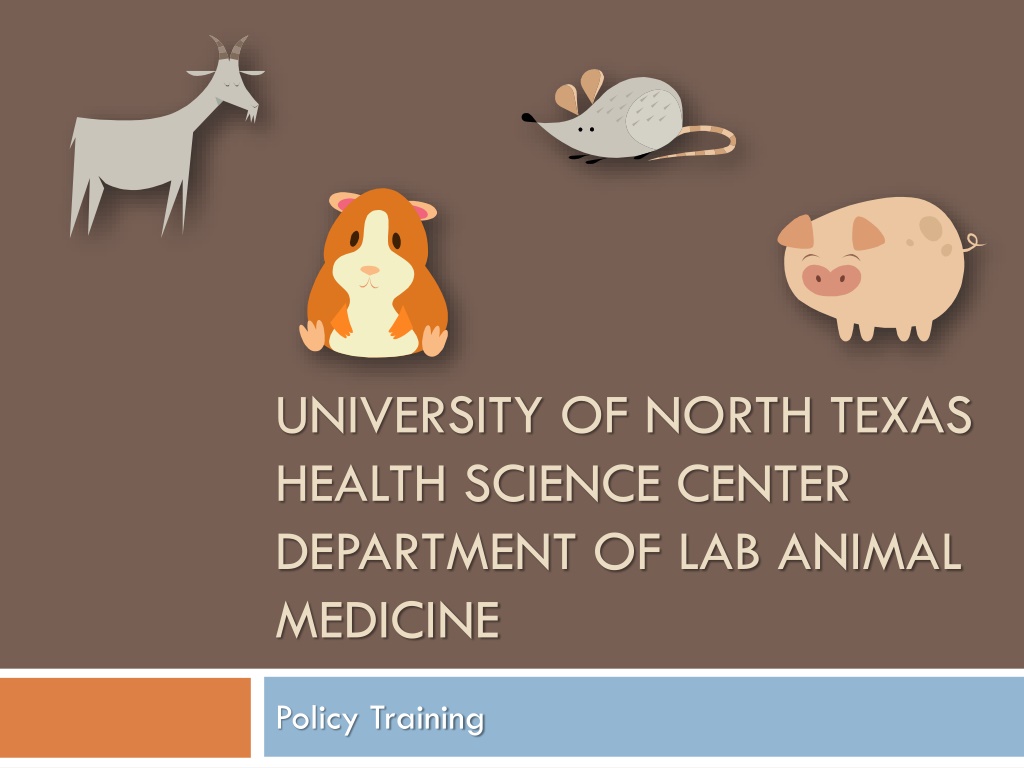
 undefined
undefined


